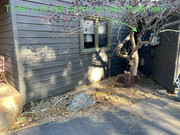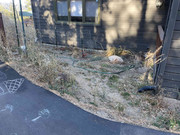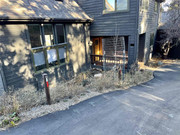




West of Denver, Colorado @ 8,000'
Zone 4(ish)... Summers are still brutal!
 7
7




Invasive plants are Earth's way of insisting we notice her medicines. Stephen Herrod Buhner
Everyone learns what works by learning what doesn't work. Stephen Herrod Buhner
 3
3




 2
2







West of Denver, Colorado @ 8,000'
Zone 4(ish)... Summers are still brutal!
 12
12




 5
5




 1
1




 4
4




A build too cool to miss:Mike's GreenhouseA great example:Joseph's Garden
All the soil info you'll ever need:
Redhawk's excellent soil-building series





 5
5








Iterations are fine, we don't have to be perfect
My 2nd Location:Florida HardinessZone:10 AHS:10 GDD:8500 Rainfall:2in/mth winter, 8in/mth summer, Soil:Sand pH8 Flat
 3
3




West of Denver, Colorado @ 8,000'
Zone 4(ish)... Summers are still brutal!
 4
4




Seth Marshall wrote:
Jenny, I too battle with Voles!! Do you think leaving all the gravel and then building raised beds on top of it would work as good as hardware cloth to help them from burrowing in!?!
 2
2




West of Denver, Colorado @ 8,000'
Zone 4(ish)... Summers are still brutal!
 1
1




Seth Marshall wrote: Jenny, that's great to know about the gravel not stopping the voles. I guess that's what you meant when you originally said after you dug the raised beds back up you were surprised to see "the layer of gravel under the raised beds was actually very soft with rich soil mixed into it".
I think I'll just go ahead and take out as much of the rocks as I can, and then add hardware cloth where needed. Even though it sounds like the rocks eventually get integrated with rich soil, I imagine getting it out would be helpful to some degree....?
Seth Marshall wrote: I don't have any experience with Gooseberries. Originally I planted strawberries against the house but I didn't realize how little they visually bush upwards--at least the cold weather varieties I choose. I wanted something to be a bigger hedge against the house but I didn't want the wild raspberry look. The local nursery had gooseberries so I thought I would try that. It isn't doing what I wanted, but I'll bet if I tried them on the edges of my pine forests it may do wonderfully. (By the way, it isn't just pine, it's all sorts of evergreen trees including fir.)
I'd love any advice on what fruiting bushes may do well against the house. The foundation just feels low here, so maybe I'd want to build up the soil first. I'd love to have something that train against the house. Like grapes or Kiwi, but I have no experience with those. If they can be trained up the house it could provide a lot of shade to cool the walls in the summer.
I've tried various plants in this area and the happiest is Luvage which really thrives here. I want to use Luvage in my yard as green manure, but not necessarily here. I don't have much need for luvage.
 1
1




Seth Marshall wrote:Please let me know if I would be better off posting this in the soil forum or elsewhere.
The previous homeowner landscaped with 3/4"-1" crushed rock. I would much rather use the area to plant various edible and medicinal plants. This layer of rock goes deep because it's been there and been added too for decades.
I built a machine out of a concrete mixer to help sift an area I already worked to remove rocks. It was very exhaustive and the area still isn't perfectly clean. I will probably ultimately need to add compost to the area because it's low anyhow.
Is it worth removing this sized rock? Is there even an advantage to removing it?! thanks!
I posted some pics and more info a few posts below
Spero Meliora




West of Denver, Colorado @ 8,000'
Zone 4(ish)... Summers are still brutal!

 1
1




How Permies works: https://permies.com/wiki/34193/permies-works-links-threads
My projects on Skye: The tree field, Growing and landracing, perennial polycultures, "Don't dream it - be it! "
 1
1




West of Denver, Colorado @ 8,000'
Zone 4(ish)... Summers are still brutal!
 1
1








West of Denver, Colorado @ 8,000'
Zone 4(ish)... Summers are still brutal!




Seth Marshall wrote:Hi Jenny, great advice. I need to talk to neighbors because I haven't heard of or seen indications of termites in my area. Any idea what Alex meant by "termite covers"?
Earlier in this thread I said the foundation feels high, but it's really only about one foot off the ground before the cedar siding starts. What I meant to say was it just feels bare on the lower part of the house so I wanted these bushes/plants to give some life to it.
I mentioned creating a berm on the side of the house. If I do that is it simple enough to make sure I keep any wood or wood chips away from that wall? Or would it be best to dig a small trench behind this berm and keep it clear of debris?
Spero Meliora




West of Denver, Colorado @ 8,000'
Zone 4(ish)... Summers are still brutal!

|
He was giving me directions and I was powerless to resist. I cannot resist this tiny ad:
The new kickstarter is now live!
https://www.kickstarter.com/projects/paulwheaton/garden-cards
|





